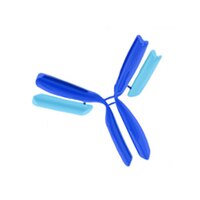AB3152 Sigma-AldrichAnti-Amphiregulin Antibody
This Anti-Amphiregulin Antibody is validated for use in ELISA, IP, WB for the detection of Amphiregulin.
More>> This Anti-Amphiregulin Antibody is validated for use in ELISA, IP, WB for the detection of Amphiregulin. Less<<Prodotti consigliati
Panoramica
| Replacement Information |
|---|
Tabella delle specifiche principali
| Species Reactivity | Key Applications | Host | Format | Antibody Type |
|---|---|---|---|---|
| H, M | ELISA, IP, WB | Rb | Purified | Polyclonal Antibody |
| Description | |
|---|---|
| Catalogue Number | AB3152 |
| Brand Family | Chemicon® |
| Trade Name |
|
| Description | Anti-Amphiregulin Antibody |
| Alternate Names |
|
| References |
|---|
| Product Information | |
|---|---|
| Format | Purified |
| Presentation | Purified immunoglobulin from rabbit anti-serum by Protein A chromatography. Liquid in 10mM PBS, pH 7.4, with 0.2% BSA and 15mM sodium azide. |
| Quality Level | MQ100 |
| Physicochemical Information |
|---|
| Dimensions |
|---|
| Materials Information |
|---|
| Toxicological Information |
|---|
| Safety Information according to GHS |
|---|
| Safety Information |
|---|
| Storage and Shipping Information | |
|---|---|
| Storage Conditions | Maintain refrigerated at 2-8°C in undiluted aliquots for up to 12 months. |
| Packaging Information | |
|---|---|
| Material Size | 100 µg |
| Transport Information |
|---|
| Supplemental Information |
|---|
| Specifications |
|---|
| Global Trade Item Number | |
|---|---|
| Numero di catalogo | GTIN |
| AB3152 | 04053252731754 |
Documentation
Anti-Amphiregulin Antibody MSDS
| Titolo |
|---|
Anti-Amphiregulin Antibody Certificati d'Analisi
| Titolo | Numero di lotto |
|---|---|
| RABBIT ANTI-AMPHIREGULIN | 2830926 |
| RABBIT ANTI-AMPHIREGULIN - 3321167 | 3321167 |
| RABBIT ANTI-AMPHIREGULIN - 3835393 | 3835393 |
| RABBIT ANTI-AMPHIREGULIN - 4116921 | 4116921 |
| RABBIT ANTI-AMPHIREGULIN -2851253 | 2851253 |
| RABBIT ANTI-AMPHIREGULIN POLYCLONAL ANTIBODY | 3036930 |
| RABBIT ANTI-AMPHIREGULIN POLYCLONAL ANTIBODY | 2935538 |
| RABBIT ANTI-AMPHIREGULIN POLYCLONAL ANTIBODY | 3079146 |
| RABBIT ANTI-AMPHIREGULIN POLYCLONAL ANTIBODY - 2080269 | 2080269 |
| RABBIT ANTI-AMPHIREGULIN POLYCLONAL ANTIBODY -2582839 | 2582839 |
Riferimenti bibliografici
| Panoramica dei riferimenti bibliografici | Codice d'identificazione nel Pub Med |
|---|---|
| Structure and function of human amphiregulin: a member of the epidermal growth factor family Shoyab, M, et al Science, 243:1074-1076 (1989) 1988 | 2466334
 |







